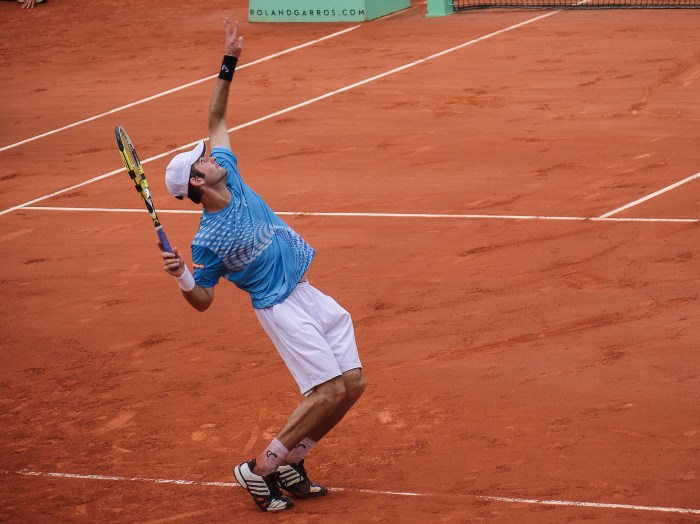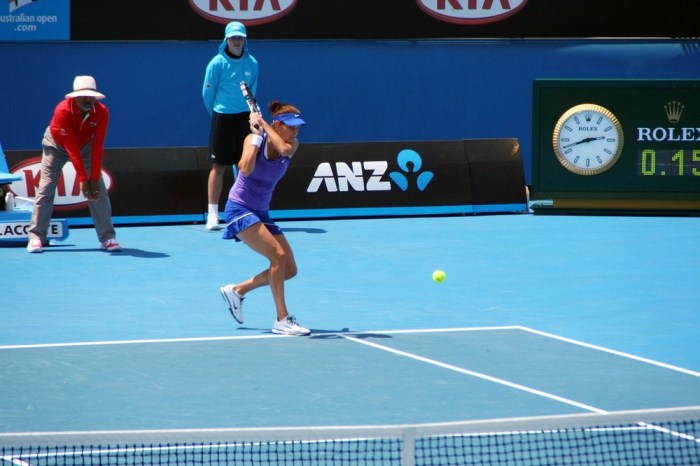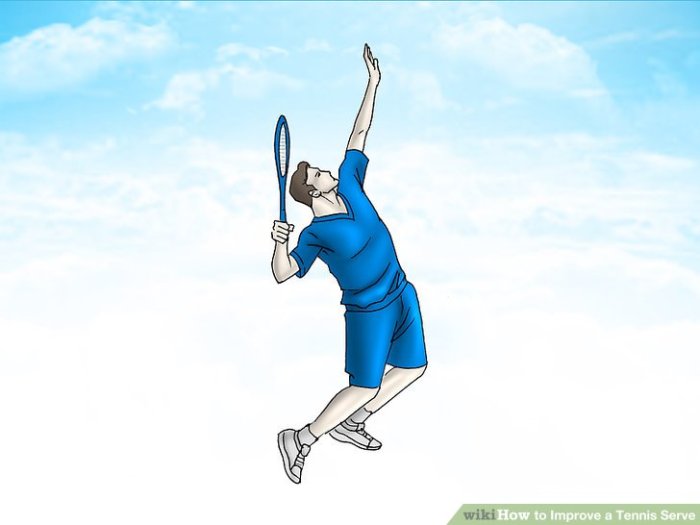
Dive into the world of Tennis Player Training Routines, where we unravel the secrets behind elite performance on the court. From strength training to mental conditioning, get ready to elevate your game to the next level!
In this guide, we’ll explore the key elements of a tennis player’s training regimen and how each component contributes to success on the court. Whether you’re a beginner or a seasoned pro, these insights will help you fine-tune your skills and dominate the game.
Tennis Player Training Routines

Training routines are crucial for tennis players to enhance their skills, improve their performance, and prevent injuries. A structured training regimen helps players build strength, endurance, agility, and mental toughness.
Key Elements in a Tennis Player’s Training Regimen
A tennis player’s training regimen typically includes:
- Cardiovascular exercises to improve endurance and stamina on the court.
- Footwork drills to enhance agility and speed in moving around the court.
- Practice sessions focusing on strokes, serves, volleys, and overall technique.
- Flexibility and mobility exercises to prevent injuries and improve range of motion.
Incorporating Strength Training
Strength training is essential for tennis players to generate power in their shots, improve overall athleticism, and reduce the risk of injuries. Some key strength training exercises for tennis players include:
- Squats and lunges to strengthen the lower body.
- Push-ups and planks to build upper body strength.
- Core exercises such as Russian twists and planks to enhance stability and balance.
- Resistance band exercises to improve muscular endurance.
Mental Conditioning in Training Routines
Mental conditioning plays a significant role in a tennis player’s training routine as it helps them develop focus, concentration, resilience, and mental toughness on the court. Strategies such as visualization, goal-setting, mindfulness, and stress management techniques are often incorporated to enhance the mental aspect of the game.
Sports Tennis
Tennis is a sport with a rich history that dates back to the 12th century in France. Over the centuries, it has evolved into the modern game we know today, with standardized rules and equipment. The sport has gained popularity worldwide, with major tournaments like Wimbledon, the US Open, the French Open, and the Australian Open attracting top players from around the globe.
Types of Tennis Courts
There are three main types of tennis courts: hard courts, clay courts, and grass courts. Each type of court has different playing characteristics that can impact the style of play. Hard courts are faster and provide a more consistent bounce, favoring aggressive players. Clay courts are slower, with a higher bounce, which benefits defensive players. Grass courts are the fastest surface, with a low bounce, making it challenging for players to adapt quickly.
Singles vs. Doubles Tennis Matches
In singles tennis matches, each player competes against one opponent, while in doubles matches, two players form a team and compete against another pair. Doubles matches require teamwork, communication, and strategic positioning on the court. The rules for singles and doubles matches are mostly the same, but there are specific rules for doubles, such as the service order and positioning of players during the match.
Physical and Mental Benefits of Playing Tennis
Playing tennis regularly offers numerous physical and mental benefits. It is a great cardiovascular workout that improves agility, coordination, and flexibility. The fast-paced nature of the game also helps to enhance reflexes and hand-eye coordination. Additionally, tennis is a mentally stimulating sport that requires strategic thinking, focus, and concentration, which can help improve cognitive function and reduce stress levels.
Water Sports
Water sports have gained immense popularity over the years due to their exciting and adventurous nature. Engaging in water sports not only provides a fun experience but also contributes significantly to physical fitness and overall well-being.Swimming, surfing, paddleboarding, and kayaking are some popular water sports activities enjoyed by people of all ages around the world. These activities not only offer a great way to stay active but also help improve cardiovascular health, muscle strength, and endurance.
Importance of Water Safety Measures
It is crucial to prioritize water safety when participating in any water sports activity. Wearing a life jacket, staying within designated swimming areas, being aware of weather conditions, and knowing how to swim are essential safety measures to prevent accidents and ensure a safe and enjoyable experience.
Health Benefits of Water Sports
- Improves cardiovascular health: Water sports like swimming and surfing help strengthen the heart and improve circulation.
- Enhances muscle strength: Paddling and swimming engage various muscle groups, leading to increased strength and endurance.
- Reduces stress: Being in the water and engaging in physical activity can help reduce stress levels and promote relaxation.
- Burns calories: Water sports are an effective way to burn calories and maintain a healthy weight.
- Enhances coordination and balance: Activities like paddleboarding require coordination and balance, improving overall physical skills.
Winter Sports
Winter sports such as skiing and snowboarding bring a unique sense of thrill and excitement, offering a fun and adventurous way to stay active during the colder months.Participating in winter sports requires a high level of physical fitness and endurance, as navigating snowy slopes and terrains can be physically demanding. Athletes must have strong leg muscles, core stability, and excellent balance to excel in these sports.The equipment and gear necessary for winter sports vary depending on the activity.
Skiing requires skis, poles, boots, and bindings, while snowboarding involves a snowboard, boots, and bindings. Additionally, helmets, goggles, gloves, and appropriate clothing are essential for safety and comfort.Engaging in winter sports not only provides physical benefits but also contributes to overall well-being and mental health. The adrenaline rush from speeding down a mountain or performing tricks on a snowboard can boost mood and reduce stress.
The serene beauty of snowy landscapes and fresh mountain air can also have a calming effect on the mind.
Benefits of Winter Sports
- Improves cardiovascular fitness and muscle strength
- Enhances balance, coordination, and agility
- Boosts mood and reduces stress
- Offers a unique way to enjoy the outdoors during the winter months
End of Discussion

As you wrap up your journey through Tennis Player Training Routines, remember that consistency and dedication are the keys to unlocking your full potential on the court. By incorporating these strategies into your routine, you’ll be well on your way to becoming a force to be reckoned with in the tennis world.
FAQ Resource
How often should I incorporate strength training into my tennis player training routine?
It’s recommended to include strength training at least 2-3 times a week to improve overall performance and prevent injuries.
Can mental conditioning really impact a tennis player’s performance?
Absolutely! Mental conditioning plays a crucial role in maintaining focus, resilience, and confidence during intense matches.
Are there specific exercises that target tennis player’s agility and footwork?
Yes, drills like ladder exercises, cone drills, and agility hurdles are great for enhancing agility and footwork on the court.





